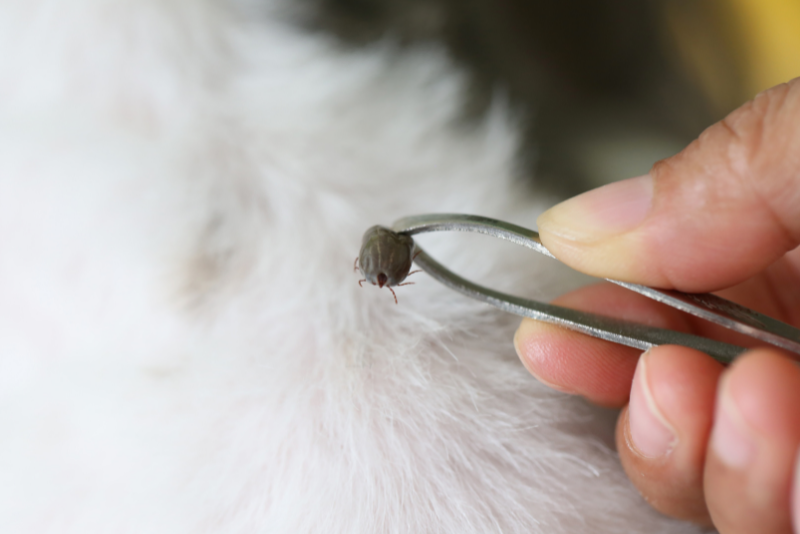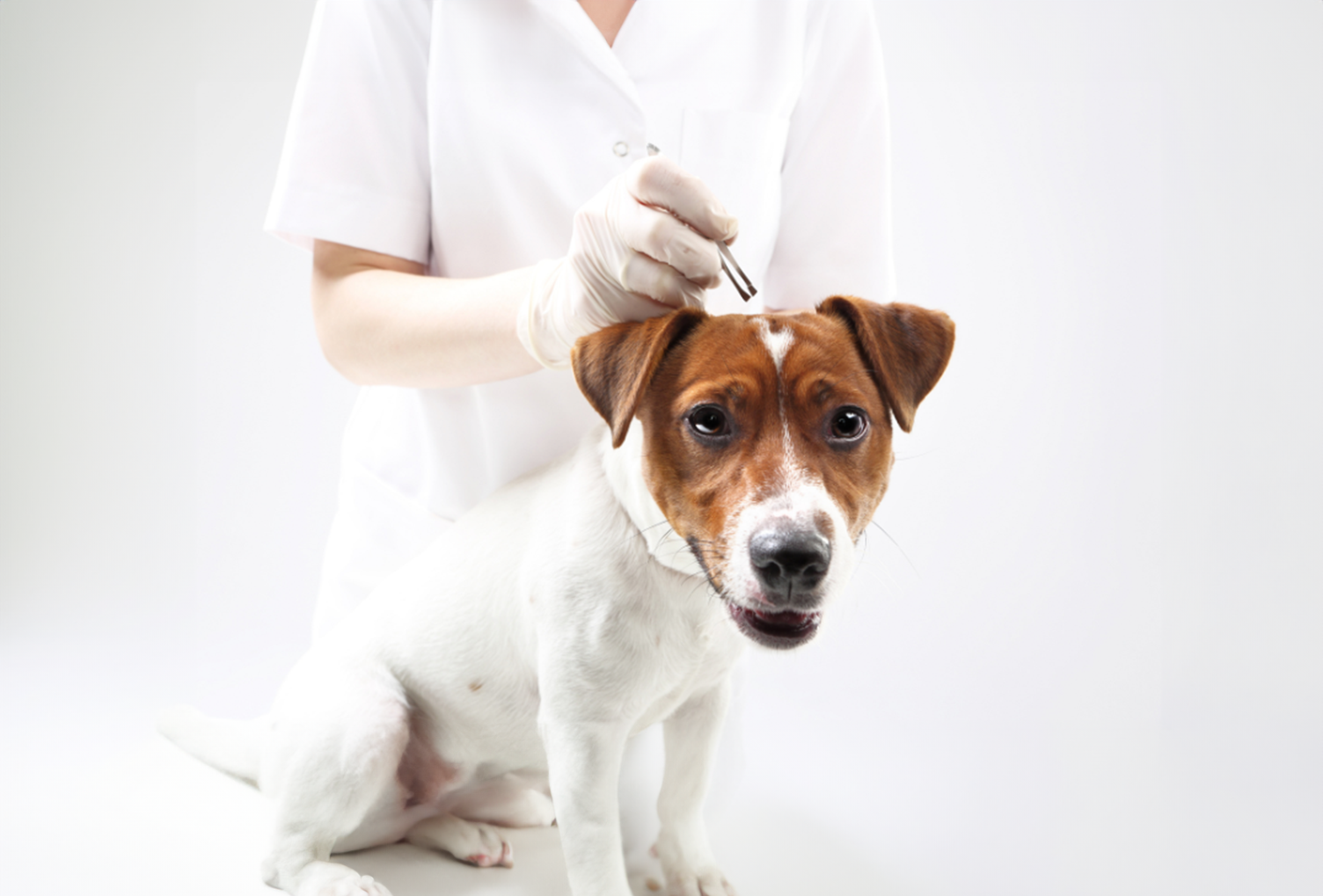Ticks are a common challenge for dogs in Norway. These creatures can not only be a nuisance, but also pose a significant health risk to our four-legged friends.
Here you get all the information you need about ticks on dogs, including prevention, removal techniques and other important information that dog owners should be aware of. So, if you are worried about ticks and want to protect your dog, this is the post for you!
1. What are ticks and why are they dangerous?
Ticks are small, blood-sucking parasites that belong to the spider family. They come in different varieties and sizes, but the most common types of ticks that affect dogs in Norway are forest ticks (Ixodes ricinus) and dog ticks/cow ticks (Dermacentor reticulatus).
Ticks thrive in moist areas, such as forests, grasslands and gardens, where they wait to attach themselves to a host to suck blood. They can attach to humans, dogs, cats and other animals. When a tick bites into the skin, it begins to suck blood and can be attached to the host for several days. Ticks are dangerous because they can transmit diseases to the host animal during the blood-sucking process.
2. Symptoms of tick bites in dogs
Tick bites in dogs can cause various symptoms and reactions. Here are some common symptoms of tick bites in dogs:
2.1. Local irritation
After a tick bite, local irritation may occur around the bite site. This can include redness, swelling, itching and tenderness.
2.2. Lameness
If the tick has attached itself near the joints or on the paws, the dog may start to limp or show signs of stiffness in its movements.
2.3. General feeling of illness
The dog may show symptoms such as fever, lethargy, reduced appetite and loss of energy. They can also develop an allergic reaction to the bite, which can lead to skin irritation.
It is important to note that symptoms of tick bites can vary depending on the dog’s individual reaction and immunity, as well as the type of tick-borne disease that may be involved. If you suspect that your dog has been bitten by a tick or shows any of the aforementioned symptoms, it is important to see a veterinarian for proper diagnosis and treatment.
3. Prevention of ticks on dogs
Prevention is essential to protect your dog from ticks and reduce the risk of tick bites. Here are some important measures for preventing ticks on dogs:
Use of tick repellants or collars
There are various tick repellents available on the market that are formulated specifically for dogs. These products can be in the form of, for example, sprays or collars. Tick repellents contain active ingredients that kill the ticks or prevent them from attaching to the skin. Always follow the instructions for use carefully and choose a product that is suitable for your dog based on size, age and other factors. You can buy spray here, among other things
Check the dog regularly
Inspecting your dog regularly is important to detect ticks early. Carry out thorough checks of the dog’s fur, especially around the ears, neck, paws and abdomen. Use your hands or a tick comb to feel for ticks or look for small black dots that indicate ticks have attached. The sooner you detect and remove the tick, the less chance there is of disease transmission and bites.
Reducing exposure to ticks
You can take some precautions to reduce your dog’s exposure to tick environments. Avoid letting the dog run freely in tall grass and dense vegetation where ticks are common. Keep your yard tidy and prune shrubs and trees to reduce tick habitat. In addition, using tick repellent sprays on the dog’s body and around areas where the dog stays can help deter ticks.
Vaccination
Talk to your vet about available vaccinations against tick-borne diseases, especially Lyme disease. Vaccinations can help to strengthen the dog’s immune system and reduce the severity of the disease if it becomes infected.
Remember that no method is 100% effective against ticks, and there is always a risk that the dog may be bitten. It is therefore important to combine several preventive measures and be aware of any changes in the dog’s health or behavior that may indicate a tick bite.
4. How to remove ticks from the dog?
If you discover a tick on your dog, it is important to remove it properly. Correct removal of ticks from the dog’s body is important to minimize the risk of infections and transmission of diseases. Here are the steps you should follow to remove ticks from your dog:
The right equipment
– Disposable gloves to protect yourself.
– Tick removal tools, such as a tick remover or small-tipped tweezers.
– Disinfectant solution, for example chlorhexidine, to clean the bite site after removal.
Put on disposable gloves to protect yourself from possible contact with the tick’s blood or body fluids.
4.1. Find the tick
Part the hair around the tick for better visibility. The tick can be attached close to the skin and can be of different sizes depending on how long it has been sucking blood.
4.2. Use the tick removal tool
Place the tick remover or tweezers as close to the skin as possible and gently grasp the tick’s head. Pull evenly and slowly upwards without twisting or twisting the tick. The aim is to get the entire tick out, including the mouthparts that may be attached to the skin.
4.3. Inspect the tick
After removal, inspect the tick carefully to ensure that the entire tick has been removed. Look for any remains of the tick that may be left in the dog’s skin. If there are any remains, gently use the tick remover or tweezers to remove them.
4.4. Clean the bite site
Clean the bite site with disinfectant solution to reduce the risk of infection. Apply a small amount of disinfectant solution to a cotton ball or clean cloth and gently wipe over the bite site.
4.5. Supervise the dog
Keep an eye on your dog for signs of infection or inflammation in the days following tick removal. If you notice signs of infection, such as redness, swelling or discharge, you should contact the vet for further follow-up and treatment.
It is important to note that there are different methods of tick removal, and some people prefer other tools or techniques. The most important thing is to be careful, thorough and ensure that the entire tick is removed without leaving parts in the skin. If you are unsure or do not feel comfortable removing ticks yourself, your vet can assist you with the removal.
5. When should you see a vet?
In certain cases, tick bites can lead to serious diseases in hunder. Here are some cases where veterinary consultation is necessary:
5.1. If the tick has been attached to the skin for more than 24 hours
The longer a tick is attached, the greater the risk of disease transmission. If you discover a tick that has been attached for more than 24 hours, you should contact your veterinarian for an assessment and possible testing of the tick for diseases.
5.2. If your dog shows severe symptoms
If your dog develops serious symptoms after a tick bite, such as persistent fever, severe lameness, extreme lethargy, loss of appetite, or other unusual symptoms, you should seek veterinary attention immediately. This may indicate a tick-borne disease that requires prompt treatment.
5.3. If the tick bite site becomes inflamed or infected
If the bite site becomes red, swollen, warm, tender or shows signs of infection, such as pus or discharge, you should see a vet. This may be a sign of an infection, and the vet may prescribe appropriate treatment, such as antibiotics.
5.4. If you are unsure about the removal
If you are unsure whether you have removed all or part of the tick, or if you are having trouble removing the tick without harming the dog, you should contact a veterinarian for help. They can help you ensure that the tick is removed correctly and provide any necessary follow-up.
It is important to remember that your veterinarian is the best resource when it comes to assessing and treating your dog’s tick bite. They can give you advice, carry out the necessary tests and prescribe the right treatment if necessary.
Summary:
Ticks are a constant threat to dogs’ health, but with the right knowledge and preventive measures, we can minimize the risk of tick bites and related diseases.
By implementing the tips in this post and paying attention to your dog’s health, you can help keep him safe and healthy during tick season. Take care of your dog and remember to consult your vet if you have any concerns or questions about dog ticks.




